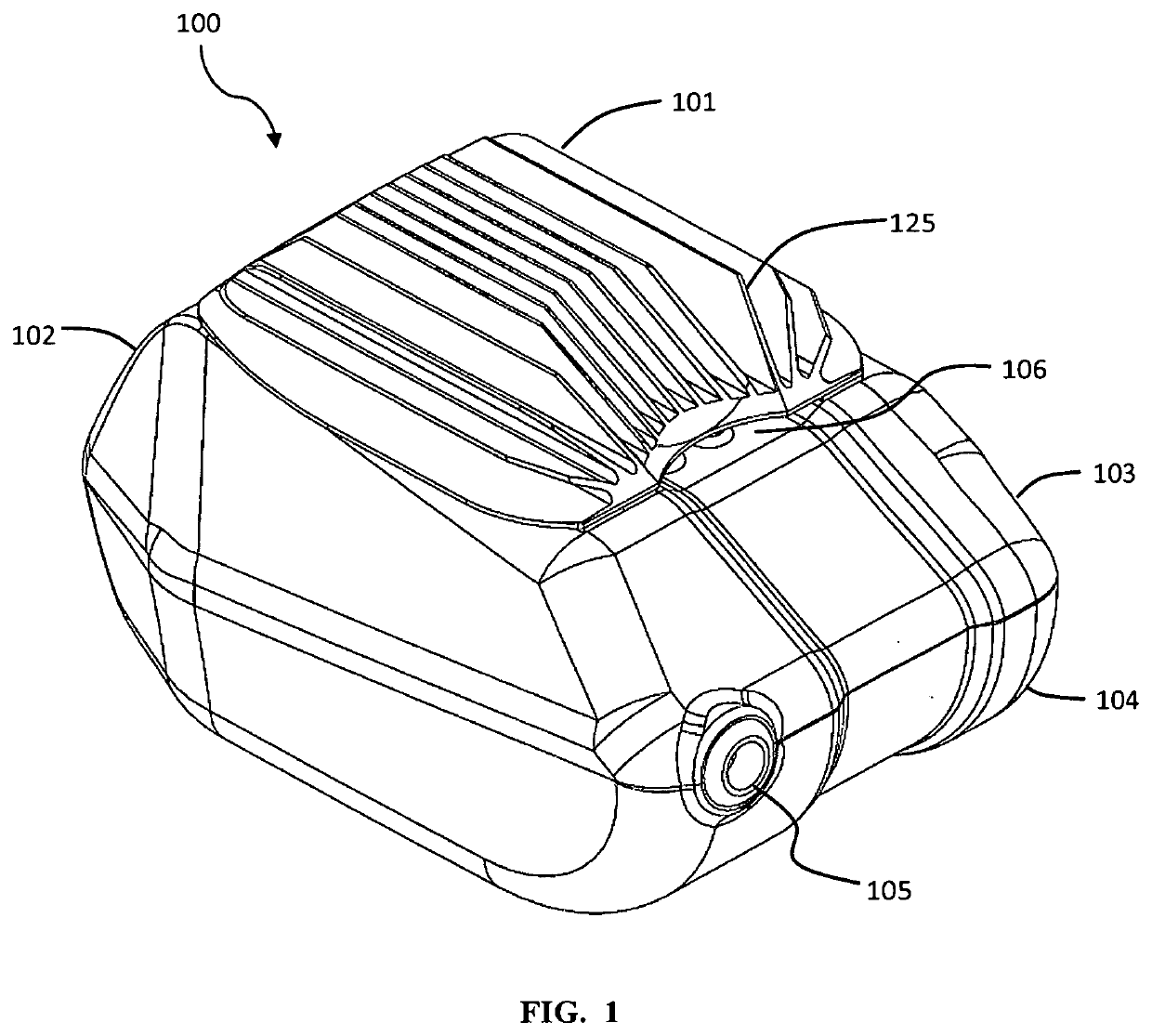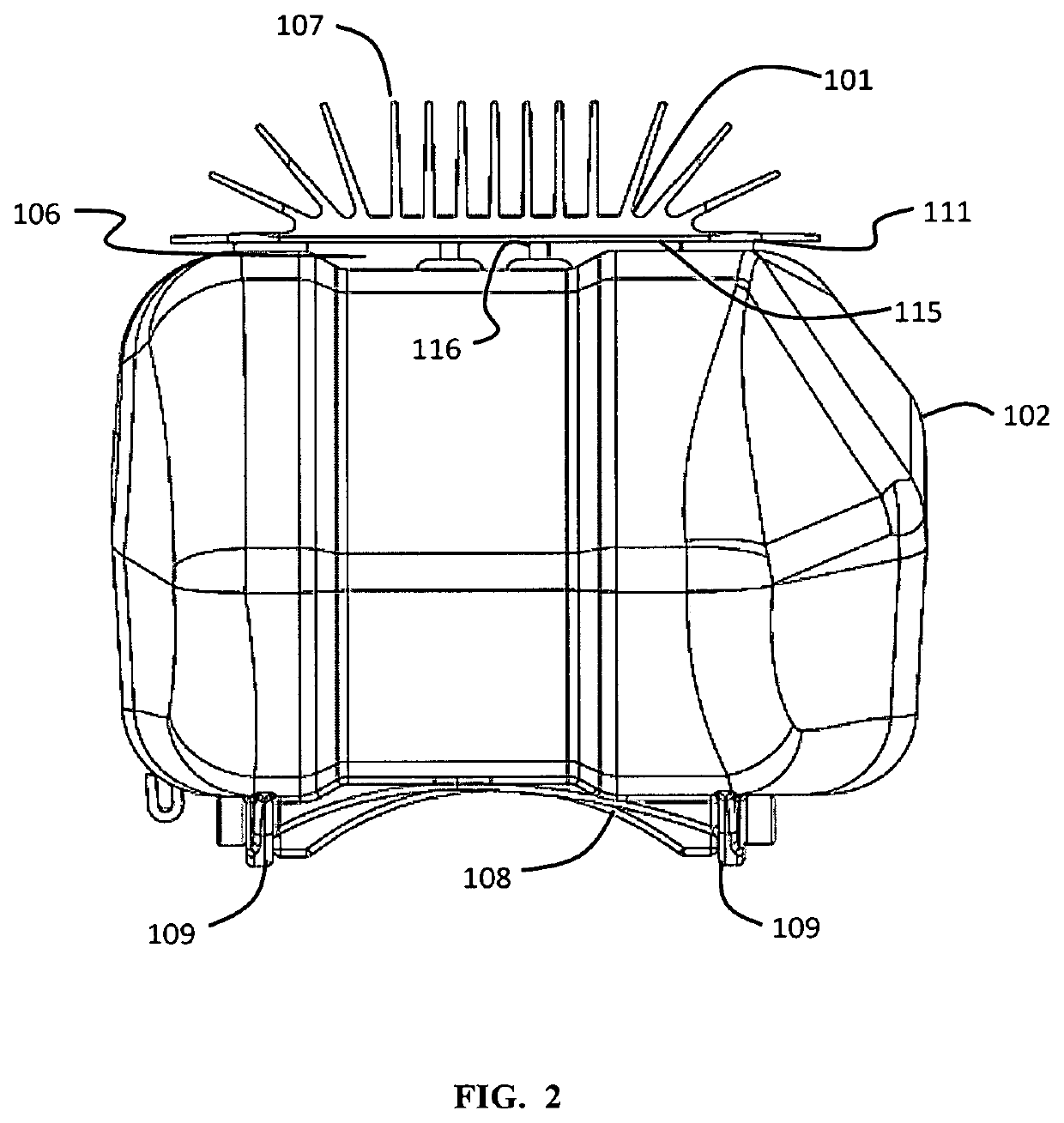Regenerative Braking Energy Dissipater And System And Method Of Using Same
- Summary
- Abstract
- Description
- Claims
- Application Information
AI Technical Summary
Benefits of technology
Problems solved by technology
Method used
Image
Examples
Embodiment Construction
[0019]In some embodiments of the present invention, as seen in FIG. 1, a regenerative braking energy dissipater system 100 has a battery case 102 and a dissipater 101. The energy dissipater system may have an electronics portion within the battery case 102 which may direct input energy either to the battery or to the dissipater 101. The battery case 102 may have an upper case portion 103 and a lower case portion 104. The battery case 102 may have a charging interface receptacle 105 adapted to receive power for the charging of the battery or batteries. An airflow passage 106 allows for airflow underneath the dissipater 101.
[0020]As seen in FIG. 2, the dissipater 101 may include a baseplate 115 and have fins 107 adapted for convective cooling of the dissipater. The baseplate 115 of the dissipater 101 may be electrically coupled to the battery case 102 with coupling pins 116. The baseplate 115 is also fastened to the battery case 102 with adhering portions 111. The adhering portions 11...
PUM
 Login to View More
Login to View More Abstract
Description
Claims
Application Information
 Login to View More
Login to View More - R&D Engineer
- R&D Manager
- IP Professional
- Industry Leading Data Capabilities
- Powerful AI technology
- Patent DNA Extraction
Browse by: Latest US Patents, China's latest patents, Technical Efficacy Thesaurus, Application Domain, Technology Topic, Popular Technical Reports.
© 2024 PatSnap. All rights reserved.Legal|Privacy policy|Modern Slavery Act Transparency Statement|Sitemap|About US| Contact US: help@patsnap.com










